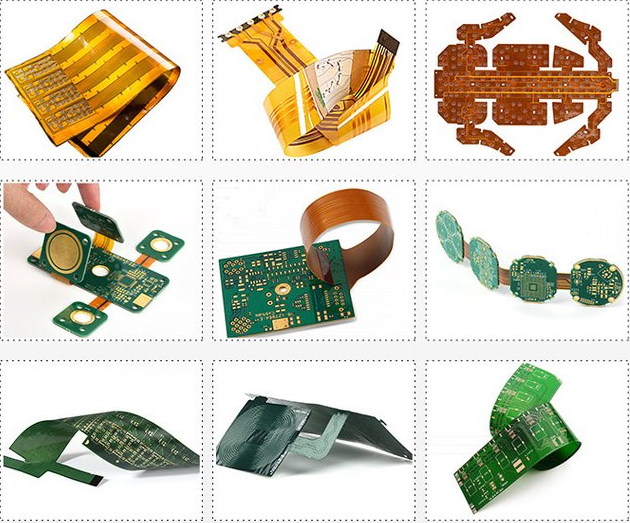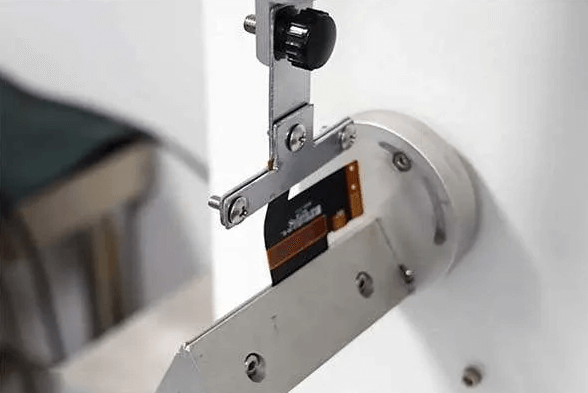When it comes to designing smart clothing, selecting the right flexible PCB material is crucial for performance, comfort, and durability. Unlike traditional rigid boards made of FR-4, flexible PCBs for wearable tech must bend, stretch, and withstand daily wear while maintaining reliable electrical connections. So, which material is best for your smart clothing project? In this comprehensive guide, we dive into a flexible PCB materials comparison, focusing on popular choices like polyimide vs PET PCB, key factors such as bend radius PCB design, and tips for ensuring smart clothing PCB reliability. Whether you're an engineer or a designer, this post will help you with material selection for wearable PCBs.
Why Flexible PCBs Are Essential for Smart Clothing
Smart clothing integrates electronics into fabrics to monitor health, track fitness, or even control temperature. These applications demand PCBs that can conform to the body's movements without breaking or losing functionality. Traditional rigid PCBs, often made of FR-4, are unsuitable due to their stiffness and bulk. Flexible PCBs, on the other hand, use thin, lightweight substrates that can bend and fold, making them ideal for wearable tech.
The choice of material for these flexible PCBs directly impacts the garment's comfort, durability, and performance. Factors like flexibility, thermal resistance, and weight play a significant role in ensuring the PCB integrates seamlessly into clothing. Let’s explore why moving beyond FR-4 is necessary and how to choose the right material for your design.
Key Factors in Material Selection for Wearable PCBs
Before diving into specific materials, it’s important to understand the criteria that guide material selection for wearable PCBs. These factors ensure the PCB meets the unique demands of smart clothing applications:
- Flexibility and Bend Radius: The material must support repeated bending without cracking. A smaller bend radius PCB design allows tighter folds, which is critical for compact designs in clothing.
- Durability: Wearable PCBs face constant movement and stress. The material must resist wear and tear over time to ensure smart clothing PCB reliability.
- Thermal Resistance: Smart clothing often operates close to the body, so the material must handle temperature fluctuations without degrading.
- Weight and Thickness: Lightweight and thin materials are essential for comfort and seamless integration into fabrics.
- Electrical Performance: The material should maintain stable electrical properties, including low dielectric loss, even under bending or stretching.
- Cost: Balancing performance with affordability is key, especially for mass-produced smart clothing.
With these criteria in mind, let’s compare two of the most common flexible PCB materials: polyimide and PET.
Flexible PCB Materials Comparison: Polyimide vs PET PCB
In the realm of flexible PCBs, polyimide and PET (polyethylene terephthalate) are two widely used substrates. Each has distinct properties that make them suitable for different aspects of smart clothing. Below, we break down the polyimide vs PET PCB comparison across key parameters.
Polyimide: The High-Performance Choice
Polyimide is a high-performance polymer often considered the gold standard for flexible PCBs. It’s known for its exceptional thermal stability and mechanical strength, making it a top choice for demanding applications.
- Flexibility and Bend Radius: Polyimide supports a tight bend radius, often as low as 0.3 mm for thin films (around 25 micrometers thick), allowing intricate designs in bend radius PCB design.
- Thermal Resistance: It can withstand temperatures up to 400°C, far exceeding typical body or environmental heat in smart clothing scenarios.
- Durability: Polyimide resists cracking after thousands of flex cycles, contributing to high smart clothing PCB reliability. Tests show it can endure over 100,000 bends without failure in many cases.
- Electrical Properties: With a dielectric constant of around 3.5 and low signal loss, polyimide ensures stable performance for high-frequency signals in wearable sensors.
- Weight and Thickness: Available in ultra-thin films (down to 12.5 micrometers), it’s lightweight and unobtrusive in clothing.
- Cost: Polyimide is more expensive than other options, which may be a drawback for budget-conscious projects.
Best Use Case: Polyimide is ideal for high-end smart clothing with complex circuits, such as medical wearables that monitor vital signs and require consistent performance under stress.
PET: The Cost-Effective Alternative
PET, or polyethylene terephthalate, is a polyester material commonly used in lower-cost flexible PCBs. While it doesn’t match polyimide’s performance in extreme conditions, it has its own advantages for specific applications.
- Flexibility and Bend Radius: PET is less flexible than polyimide, with a typical minimum bend radius of around 1-2 mm, depending on thickness (often 50-125 micrometers). This limits its use in very tight bend radius PCB design.
- Thermal Resistance: PET handles temperatures up to about 150°C, which is sufficient for most smart clothing but not for high-heat environments.
- Durability: It’s less durable under repeated bending, often showing wear after 10,000-20,000 flex cycles, impacting smart clothing PCB reliability in long-term use.
- Electrical Properties: PET has a dielectric constant of about 3.2, similar to polyimide, but it may not perform as well in high-frequency applications due to higher signal loss.
- Weight and Thickness: PET is slightly thicker and heavier than polyimide at comparable flexibility, potentially affecting comfort in clothing.
- Cost: PET is significantly cheaper, making it attractive for cost-sensitive projects or simpler designs.
Best Use Case: PET works well for budget-friendly smart clothing with basic functionality, like fitness trackers with minimal bending requirements.

Bend Radius PCB Design: Why It Matters for Smart Clothing
In bend radius PCB design, the bend radius refers to the minimum radius a PCB can be bent without damaging the material or circuitry. A smaller bend radius means the PCB can fold more tightly, which is essential for fitting into small or curved areas of smart clothing, like sleeves or collars.
For polyimide, the ability to achieve a bend radius as tight as 0.3 mm allows designers to create compact, intricate layouts. This is particularly useful for wearables with multiple sensors packed into a small space. PET, with a larger minimum bend radius, may require more space or a less aggressive design, potentially adding bulk to the garment.
When designing for smart clothing, consider the following tips to optimize bend radius:
- Use thinner substrates to reduce the bend radius. For instance, a 25-micrometer polyimide film bends more easily than a 50-micrometer one.
- Avoid placing components or vias in high-stress bend areas to prevent cracking or signal interruption.
- Simulate bending cycles during testing to ensure the design maintains smart clothing PCB reliability over time.
A practical example is a smart shirt with embedded heart rate sensors. Using a polyimide-based flexible PCB with a tight bend radius, the circuit can wrap around the chest area without adding noticeable bulk or discomfort.
Ensuring Smart Clothing PCB Reliability
Smart clothing PCB reliability is non-negotiable, as failures can compromise user safety or data accuracy in critical applications like medical wearables. Material choice plays a huge role in reliability, but so do design and manufacturing practices. Here are key considerations:
- Material Durability: As discussed, polyimide outperforms PET in flex cycle endurance, making it a better choice for garments subject to frequent movement.
- Environmental Resistance: Smart clothing may be exposed to sweat, humidity, or washing. Polyimide’s superior moisture resistance (absorption rate of about 1-3%) compared to PET (around 0.5-1% but less stable under stress) helps maintain performance.
- Layer Structure: Using adhesive-free bonding layers in multilayer designs reduces the risk of delamination during bending, a tip often highlighted in industry discussions on flexible PCB design.
- Testing: Rigorous testing for thermal cycling, bend fatigue, and signal integrity ensures the PCB holds up under real-world conditions. For instance, a wearable PCB should maintain signal integrity after 50,000 bend cycles for reliable long-term use.

Other Flexible PCB Materials to Consider
While polyimide and PET dominate the flexible PCB space, other materials may suit niche smart clothing applications:
- Polyurethane (PU): Known for extreme flexibility and stretchability, PU is emerging in highly elastic smart textiles. However, it has lower thermal resistance (up to 80-100°C) and may not support complex circuits.
- Transparent Conductive Films: For smart clothing with display elements, transparent materials like indium tin oxide (ITO) on flexible substrates offer aesthetic and functional benefits. Their bend radius and durability vary widely based on the base material.
These alternatives highlight the importance of aligning material properties with specific project needs during material selection for wearable PCBs.
How to Choose the Right Material for Your Smart Clothing Project
Selecting the best flexible PCB material for smart clothing involves balancing performance, comfort, and cost. Follow these steps to make an informed decision:
- Define Project Requirements: Determine the level of flexibility, thermal exposure, and durability needed. For high-performance medical wearables, polyimide may be worth the cost. For simple fitness bands, PET could suffice.
- Evaluate Bend Radius Needs: If your design requires tight folds, prioritize materials like polyimide with a smaller bend radius for effective bend radius PCB design.
- Consider User Comfort: Opt for thinner, lighter materials to avoid bulkiness in the garment.
- Budget Constraints: Weigh the cost against performance benefits. PET offers savings for less demanding applications.
- Prototype and Test: Build prototypes with your chosen material and test them under real-world conditions to confirm smart clothing PCB reliability.
For instance, a smart jacket with temperature control might use polyimide for its heating circuits due to high thermal demands, while a basic activity-tracking wristband could use PET to keep costs low.
Conclusion: Moving Beyond FR-4 for Smart Clothing Innovation
Designing flexible PCBs for smart clothing means stepping beyond traditional FR-4 materials and embracing substrates that offer flexibility, durability, and comfort. Through this flexible PCB materials comparison, it’s clear that both polyimide and PET have unique strengths in the polyimide vs PET PCB debate. Polyimide excels in high-performance, durable applications with tight bend radius PCB design, while PET provides a cost-effective option for simpler designs. By focusing on factors like smart clothing PCB reliability and following best practices in material selection for wearable PCBs, you can create innovative, reliable, and user-friendly smart clothing.
At ALLPCB, we’re committed to supporting your wearable tech projects with high-quality flexible PCB solutions tailored to your needs. Whether you’re exploring polyimide for a medical device or PET for a consumer product, our expertise ensures your design achieves optimal performance and reliability.
 ALLPCB
ALLPCB







